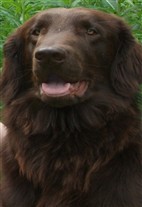Energy-intake and activity risk factors for 
owner-perceived obesity in a defined
population of Swedish dogs
Marie Sallander1, Malin Hagberg1, Åke Hedhammar2, Margareta Rundgren1 and Jan E. Lindberg1
1 Department of Animal Nutrition and Management, Swedish University of Agricultural Sciences, Uppsala, Sweden.
2 Department of Clinical Sciences, Swedish University of Agricultural Sciences, Uppsala, Sweden.
Preventive Veterinary Medicine, 2010, 96, 132-141.
http://www.sciencedirect.com/science/article/pii/S0167587710001376
Abstract
Our main objective was to obtain baseline data on daily metabolisable energy (ME) intake, activity, and risk factors for obesity in a population of 460 privately owned Swedish dogs in 1999. A previously validated mail-and-telephone questionnaire was used (Sallander et al., 2001a). The dogs were of 124 breeds, 1–3 years old, and had body weights (BW) between 1 and 75 kg. The ME intakes of this population could be described with the equation MEintake (kilojoules, kJ/d) = 554BW0.66 (rsp = 0.73, P = 0.0001). The energy intake originating from commercial foods was 79% (median, range 45–97). Table foods generally had a higher fat content (median 13 g/megajoule, MJ, range 1–122) than commercial foods (median 8 g/MJ, range 2–18; P = 0.0001). The median energy density was 1603 kJ/100 g (median; range 1106–2105).
Almost all (97%) dogs were taken for walks, and there was a significant difference between the duration of the walks during weekdays and weekends (medians 60 and 90 min/d, respectively, P = 0.006). Sixty percent of all dogs were trained in activities such as obedience (31%), hunting (27%) or tracking (18%) for a median of 35 min/d (range 1–146).
The final regression model for obesity included the factors sex, appetite and feeding a home-made diet/table foods. Dogs that were perceived to have good or very good appetite had 3.42-fold greater odds for obesity than individuals with bad or very bad appetite (95% CI 1.19–9.80; P = 0.022). Females had 2.17-fold greater odds of being obese than males did (95% CI 1.30–3.70; P = 0.003). Also, dogs fed table foods or home-made diets had 2.06-fold greater odds of obesity than those that were not given these food items (95% CI 0.97–4.35; P = 0.050).